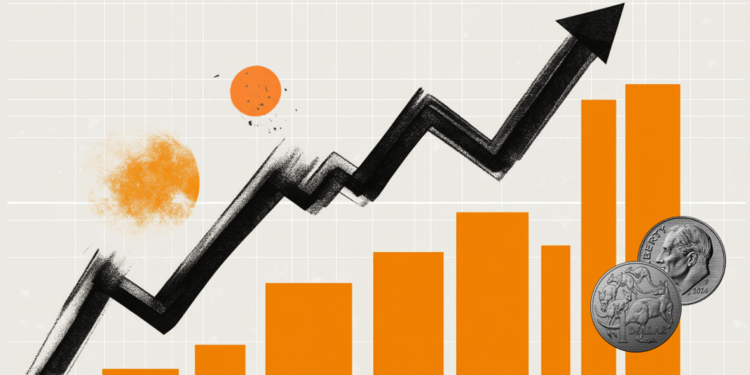Women and the field of technology It's still a cchallenging combination since the mean follows mainly occupied by men . Despite this, the female presence in the has been growing in recent years .
According to data released by the General Register of Employed and Unemployed (CAGED), in a period from 2015 to 2022, the increase in female participation was 60% in the technology sector.
However, despite the growing scenario for women, the general view is still negative, as 83.3% of the market is still made up of men, while women occupy just 12.3% of technology positions.
Women have occupied spaces within the area since past centuries. However, they have been historically erased by patriarchal society.
Even so, they continue to make a difference in the technology sector. A recent example is that of Jaqueline Goes de Jesus a Brazilian biomedical scientist responsible for coordinating the team that carried out the sequencing of the genome of the SARS-CoV-2 virus, just 48 hours after the confirmation of the first case of COVID-19 in Brazil.
Below, the CNN prepared a list of 6 examples of women who were – and are – historic and important for the advancement of technology.
Historical women who contributed and continue to contribute to the advancement of technology:
-
Ada Lovelace, computer pioneer

One of the best-known names when we talk about the impact of women in technology, Ada Lovelace was one of the pioneers in the field, at least as far as we know. She lived from 1815 to 1852.
Long before the age of computers and at a time when the presence of women at universities was not possible, Ada was an English mathematician and writer, known mainly for her work on a mechanical computer.
The algorithm she created – which history came to know as the first designed to be executed by a machine – was planned to be used in the so-called “Analytical Engine”, by Charles Babbage.
Ada Lovelace has had a commemorative date since 2009. On October 15th, on “Ada Lovelace Day”, women’s often forgotten contributions to mathematics and technology are celebrated.
-
Grace Hopper, programming language development

Grace Murray Hopper was present in the development of computers and programming languages between the 1930s and 1980s. She lived from 1906 to 1992.
One of the greatest achievements of his career was the development of computer languages written in English rather than mathematical notation—most notably, the common business computing language known as COBOL, or Common Business-Oriented Language (oriented toward processing data). commercial database), which is still used today.
Hopper's legacy is honored by the annual “Grace Hopper Celebration of Women in Computing” conference.
-
Hedy Lamarr, Wi-Fi pioneer

In addition to being an actress, Hedy Lamarr had a significant technological contribution in World War II. She lived from 1914 until 2000.
Together with George Antheil, she designed a communications system for the United States Armed Forces – which served as the basis for what we now know as WiFi, GPS and Bluetooth systems. Their intention at the time was to guide torpedoes to their targets in the war.
The system created, however, was never authorized by the Navy.
It is worth mentioning that Hedy Lamarr was also a pioneer in acting. With her performance in the film “Ecstasy”, a Czech film, the star was the first actress to play an orgasm scene in cinema.
-
Mary Jackson, NASA engineer

Mary Jackson studied mathematics and physics and excelled at NASA. To continue working at the agency, she had to study engineering. This made her the first black woman engineer at NASA. The professional, who lived from 1921 to 2005, studied the air limit around airplanes and wind tunnels.
Mary Jackson is one of the names that inspired the film “Hidden Figures”.
-
Fei-Fei Li, “godmother of AI”

Fei-Fei Li is known as the “godmother of AI”, spending more than 20 years in the field of artificial intelligence in order to develop innovative technology, and is in the select – and mostly male – group of people responsible for advancing the area .
Fei-Fei Li currently directs the artificial intelligence laboratory at Stanford University in the United States, where he leads a team of postgraduate students who teach robots to imitate human behavior.
-
Jaqueline Goes de Jesus, role in Covid-19

Jaqueline Goes de Jesus is the Brazilian who led the sequencing of the genome of SARS-CoV-2, a variant of Covid-19 in Brazil, in just 48 hours after confirming the first case of the virus in the country – much faster than the average in the rest of the world for this mapping, which was 15 days.
Sequencing made it possible to differentiate the virus that infected the Brazilian patient from the genome identified in Wuhan, the epicenter of the epidemic in China.
Jaqueline has a PhD in Human and Experimental Pathology from the Federal University of Bahia (UFBA) and is a researcher at the Institute of Tropical Medicine of São Paulo at the University of São Paulo (IMT/USP). She is also part of the Brazil-UK Joint Center for Arbovirus Discovery, Diagnosis, Genomics and Epidemiology.
Source: CNN Brasil
Charles Grill is a tech-savvy writer with over 3 years of experience in the field. He writes on a variety of technology-related topics and has a strong focus on the latest advancements in the industry. He is connected with several online news websites and is currently contributing to a technology-focused platform.







